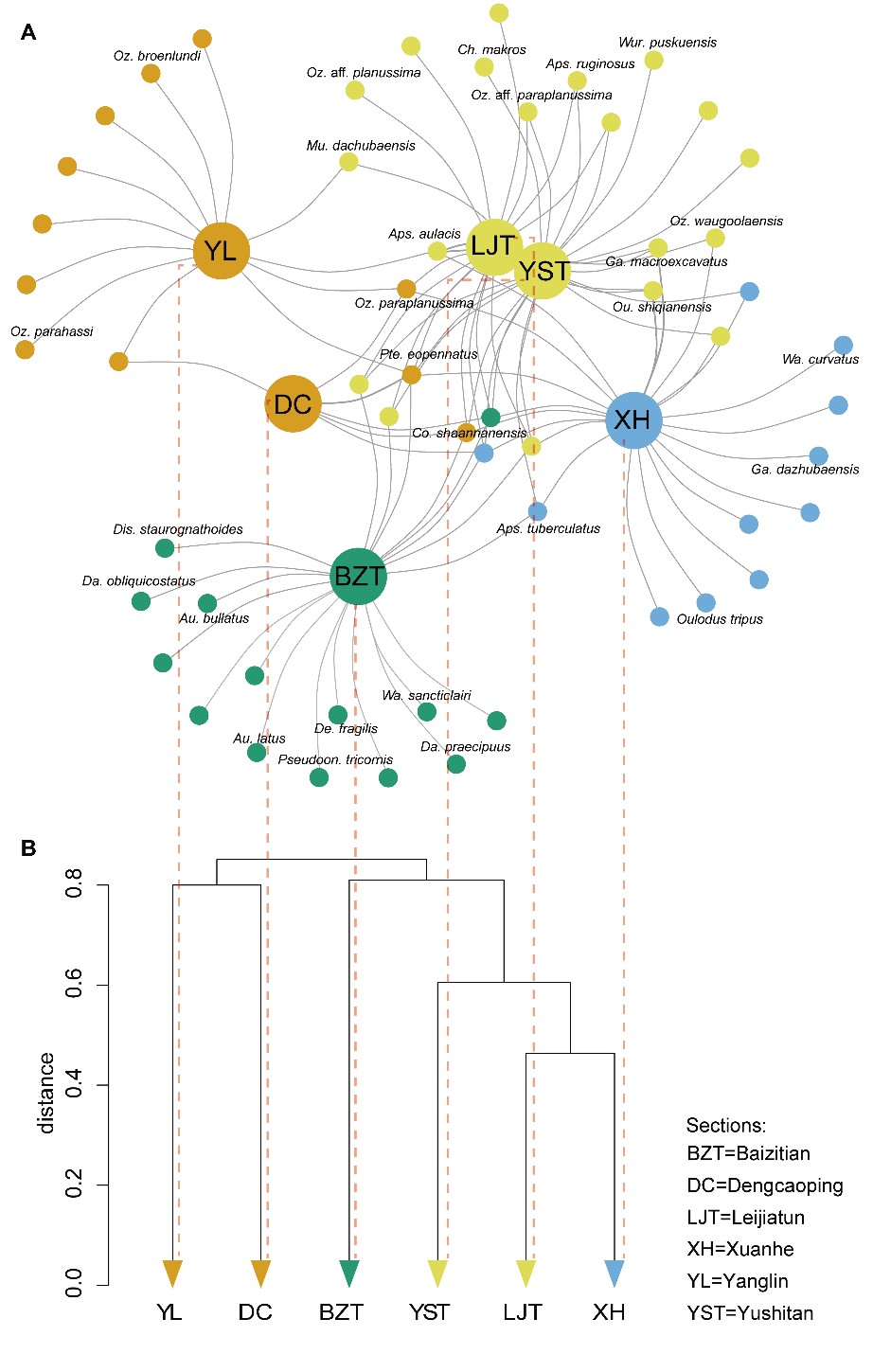Silurian (Telychian) conodont distribution on the Yangtze Platform of South China is quantitatively studied for the first time.
Conodonts are of significant importance for global biostratigraphic correlation of strata containing Palaeozoic and Triassic marine faunas but this biostratigraphic utility can be complicated by their depth-controlled distribution. Temporal and spatial distribution patterns of conodonts have attracted increasing attention during the past six decades.
Palaeoecological distribution of Silurian conodonts has been widely discussed, but knowledge of conodont associations in the Llandovery is uneven. Previous studies demonstrated that Telychian conodont distributions were related to the associated palaeoenvironments, therefore hindering global correlation of conodont zonations.
Diverse Telychian (Llandovery Series, Silurian System) conodont faunas have been documented from the South China Palaeoplate. YAN Guanzhou, a Ph.D. candidate in the Early Paleozoic team of Nanjing Institute of Geology and Palaeontology, Chinese Academy of Sciences (NIGPAS), under the supervision of Prof. WU Rongchang, collaborated with members of the group and Dr. Ian G. Percival from Australia, based on data from six selected sections in the Yangtze Platform, the spatial distribution of the Telychian conodont associations is investigated in detail by use of multivariate statistical methods. The results of this study were recently published in the Journal of Asian Earth Sciences.
On the basis of statistical analysis, two Telychian conodont biofacies can be observed in South China: the Dapsilodus-Decoriconus Biofacies which is restricted to deep-water environments, and the Apsidognathus-Galerodus Biofacies which is indicative of shallower water environments.
One regression and two transgressions are deduced from relative abundance patterns of characteristic conodont taxa comprising these biofacies. Vertical changes of conodont biofacies in the Baizitian and Xuanhe sections permit the recognition of transgressive–regressive patterns which are closely similar to published sea-level curves for the Early Silurian. Pterospathodus eopennatus Therefore, it is argued that vertical variations in abundance of specific Silurian conodont taxa can be used as proxies for inferring major changes in sea-level.
This research was supported by the National Natural Science Foundation of China and the Strategic Priority Research Program of the Chinese Academy of Sciences. Ian Percival publishes with permission of the Executive Director of the Geological Survey of New South Wales.
Reference: Yan Guanzhou, Wu Rongchang*, Huang Bing, Percival I.G, Gong Fangyi, Wei Xin & Li Lixia. 2021. Llandovery (Silurian) conodont biofacies on the Yangtze Platform of South China and their palaeoenvironmental implications. Journal of Asian Earth Sciences, 225(2): 105044. https://doi.org/10.1016/j.jseaes.2021.105044.

Scatter-plot of correspondence analysis (COA) showing the analysed Telychian (Llandovery, Silurian) sections and taxa (genera).

A. Network diagram based on species-level data shows an overview of the conodont species in the Pterospathodus eopennatus Zone of the selected sections. B. Cluster analysis of the conodont species in the Pterospathodus eopennatus Zone of the selected sections.
Contact:
LIU Yun, Propagandist
Email: yunliu@nigpas.ac.cn
Nanjing Institute of Geology and Palaeontology, Chinese Academy of Sciences
Nanjing, Jiangsu 210008, China
